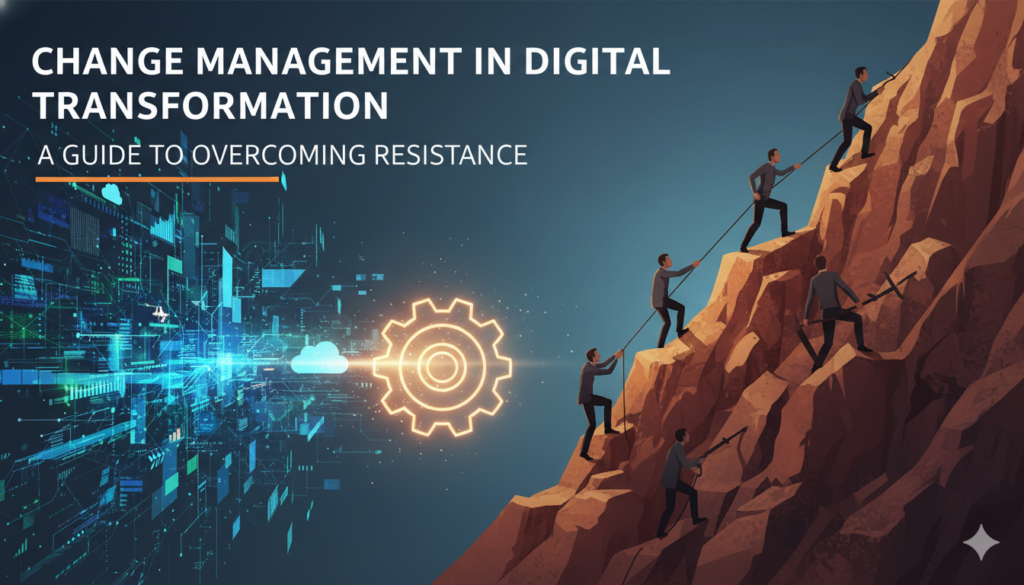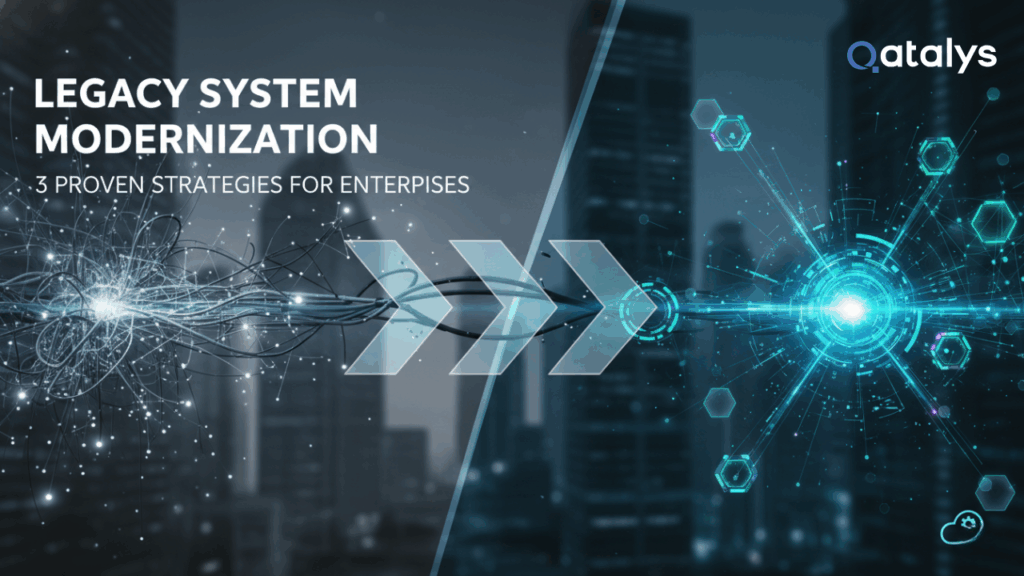Global Capability Centers (GCCs) are shedding their “back-office” identity. What began as cost-arbitrage hubs focused on IT and support has evolved into a strategic model powering R&D, AI, and product engineering.
According to Zinnov, nearly half of India’s GCCs are now engaged in engineering R&D and AI-driven innovation. Financial Express notes that Indian GCCs are “moving beyond back-office roles to become AI-driven innovation hubs,” housing leadership density and domain expertise that directly impact business growth.
This shift redefines what a GCC can do – from executing projects to creating intellectual property. In this post, we’ll explore how GCCs are transforming into global innovation engines, what drives that change, and how enterprises can use it to their advantage.
From Back Office to Innovation Engine
For nearly two decades, GCCs were built to reduce costs and ensure continuity. They handled IT support, maintenance, finance, HR, and shared services – efficiency was the metric that mattered.
As digital transformation became the growth driver for enterprises, that playbook changed. Businesses wanted offshore centers that didn’t just support operations but shaped them. This gave rise to what experts call GCC 2.0 and 3.0 – centers built for capability creation.
According to Tech Mahindra, next-generation GCCs are evolving into “AI-enabled ecosystems where automation, data, and design converge to accelerate innovation.” Many now host R&D labs, AI Centers of Excellence, and product engineering teams that deliver high-value work – from building prototypes to launching global platforms.
India leads this wave with over 1,600 GCCs employing 1.6 million people. Nearly half now contribute to R&D, AI, and engineering innovation – turning what were once delivery centers into full-scale innovation hubs.
The Unified Power of R&D, AI & Product Engineering
Modern GCCs combine R&D, AI, and product engineering into one seamless ecosystem where ideas move from concept to release within the same walls.
R&D teams are leading product ideation, testing prototypes, and refining global features. AI and machine learning are accelerating these cycles – automating testing, predicting customer behavior, and improving design accuracy. A recent CGI report describes this as the move “from execution engines to cognitive hubs capable of independent decision-making.”
Meanwhile, engineering teams within GCCs design cloud-native architectures, DevOps pipelines, and user experiences that scale globally. By integrating AI and automation into development, these centers deliver faster, more reliable, and cost-efficient outcomes.
Together, these pillars make GCCs strategic assets – places where business strategy meets technology execution and innovation scales sustainably.
Why GCCs Are Built for R&D and AI
1. Access to Deep Talent
India’s GCC ecosystem attracts world-class engineers, data scientists, and product specialists. The country produces over 1.5 million STEM graduates annually, giving enterprises a robust talent base for advanced R&D and AI projects.
2. Scale with Cost Advantage
Operating in hubs like Hyderabad, Bangalore, and Chennai, companies can build large, high-performance innovation teams at up to 50 % lower cost than in Western markets. This flexibility fuels experimentation and proof-of-concept development.
3. Cross-Functional Collaboration
GCCs bring R&D, data, and engineering together under agile frameworks. Overlapping time zones with HQs enable 24×7 development cycles and rapid iteration.
4. Governance & IP Security
Mature GCCs maintain enterprise-grade compliance and IP frameworks – giving global companies the confidence to transfer high-value product work offshore.
5. Ecosystem Advantage
India’s GCC clusters now form entire ecosystems of universities, startups, and accelerators, allowing companies to collaborate, recruit, and co-innovate faster than in most global markets.
In short, the GCC model balances innovation freedom with operational discipline – the perfect setup for continuous transformation.
Challenges in the Shift to Innovation
Transforming a GCC from a delivery unit into a creative hub isn’t friction-free.
- Cultural Shift: Traditional GCCs excel at execution, but innovation thrives on risk and iteration. Balancing control with autonomy is key.
- Ownership & Alignment: Defining who owns product decisions between HQ and GCC prevents confusion and wasted effort.
- Infrastructure Gaps: Advanced AI and R&D need modern cloud infrastructure and secure data environments.
- Talent Retention: With demand for AI and product engineering soaring, GCCs must invest in upskilling and retention to maintain continuity.
- Strategic Fit: Innovation succeeds only when it aligns with the enterprise roadmap – embedded leadership and shared KPIs help maintain that focus.
As Zinnov observes, “The biggest challenge for GCCs isn’t capability – it’s context.”
Strategic Recommendations & Best Practices
1. Start with Focused Domains – Begin with high-impact areas like automation or product modernization. Prove value before scaling.
2. Embed Product Ownership – Empower GCC-based product owners and tech leads to make decisions quickly and drive accountability.
3. Invest in R&D Infrastructure – Create innovation labs, sandboxes, and data frameworks that enable safe experimentation.
4. Strengthen Leadership & Governance – Combine local site heads with HQ stakeholders for aligned decision-making.
5. Build Innovation Culture – Encourage cross-team projects, hackathons, and recognition programs that reward creative problem-solving.
6. Secure IP Early – Establish intellectual-property and compliance frameworks from day one.
7. Measure Innovation, Not Just Delivery – Track time-to-prototype, automation rate, feature adoption, and business impact to quantify results.
With these foundations, a GCC can evolve into a self-sustaining innovation hub that consistently drives enterprise growth.
Future Trends & Outlook
The next generation of GCCs will be smarter, faster, and more autonomous.
- AI-First GCCs: Generative AI and predictive analytics will define new operating models, where AI manages workflows and assists development teams.
- Product-Led Models: GCCs will increasingly own entire product lifecycles and contribute original IP to parent companies.
- Multi-Hub Networks: Distributed GCCs across Hyderabad, Bangalore, Chennai, and Pune will specialize in niche domains – AI R&D, platform engineering, or customer experience.
- Ecosystem Collaboration: Tighter partnerships with startups and universities will feed constant innovation and new talent pipelines.
- ROI Visibility: GCCs will be measured not by cost savings but by innovation velocity and market impact.
The GCC of tomorrow won’t just support the business – it will shape it.
From Support to Strategy
The days of GCCs as IT support arms are long gone. They’ve become global platforms for innovation – leading R&D, developing AI solutions, and engineering products that shape industries.
At Qatalys, we help enterprises make that leap. Our end-to-end GCC setup services cover everything from strategic design and infrastructure to AI enablement, product engineering, and leadership recruitment.
Whether you’re a mid-sized firm building your first R&D hub or an enterprise expanding into AI-driven product development, we deliver GCCs that go beyond IT support – into the future of innovation. Talk to us!
Build smarter. Build faster. Build your GCC with Qatalys.








